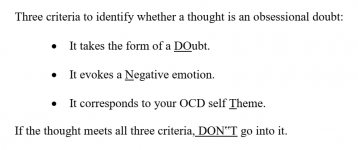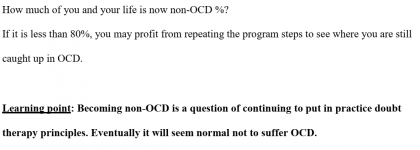"We're lousy at recognizing when our normal coping mechanisms aren't working. Our response is usually to do it five times more, instead of thinking, maybe it's time to try something new."
~ Robert Sapolsky
"For the overcontrolled individual, their motto is “When in doubt, apply more self-control,” irrespective of circumstances or potential consequences.Overcontrolled coping persists because it gets rewarded (or reinforced), at least occasionally."
~ Thomas R. Lynch
~ Robert Sapolsky
"For the overcontrolled individual, their motto is “When in doubt, apply more self-control,” irrespective of circumstances or potential consequences.Overcontrolled coping persists because it gets rewarded (or reinforced), at least occasionally."
~ Thomas R. Lynch






